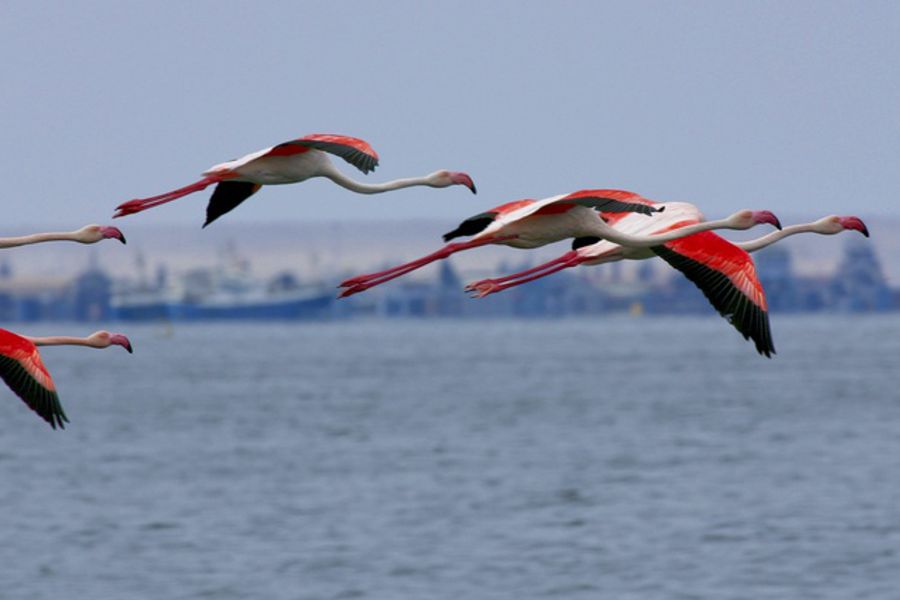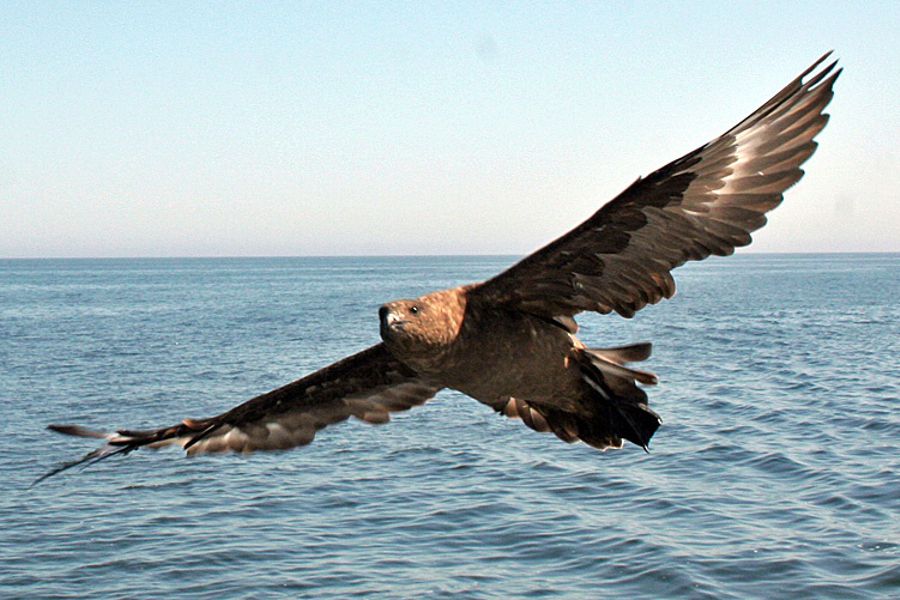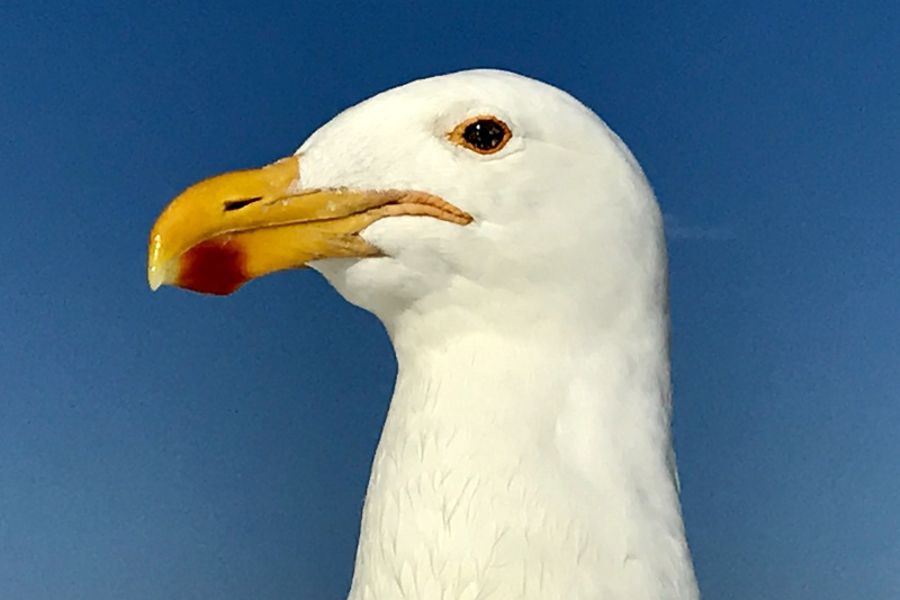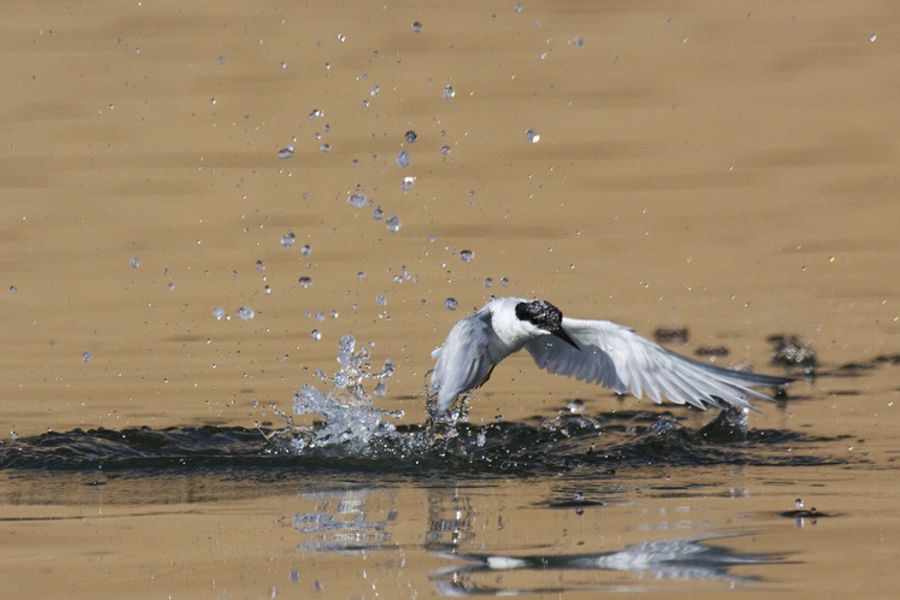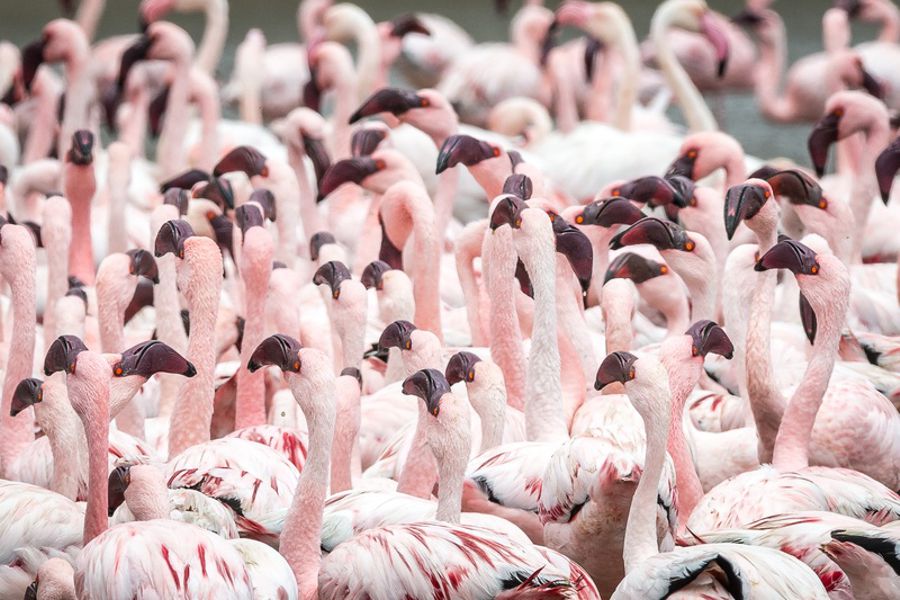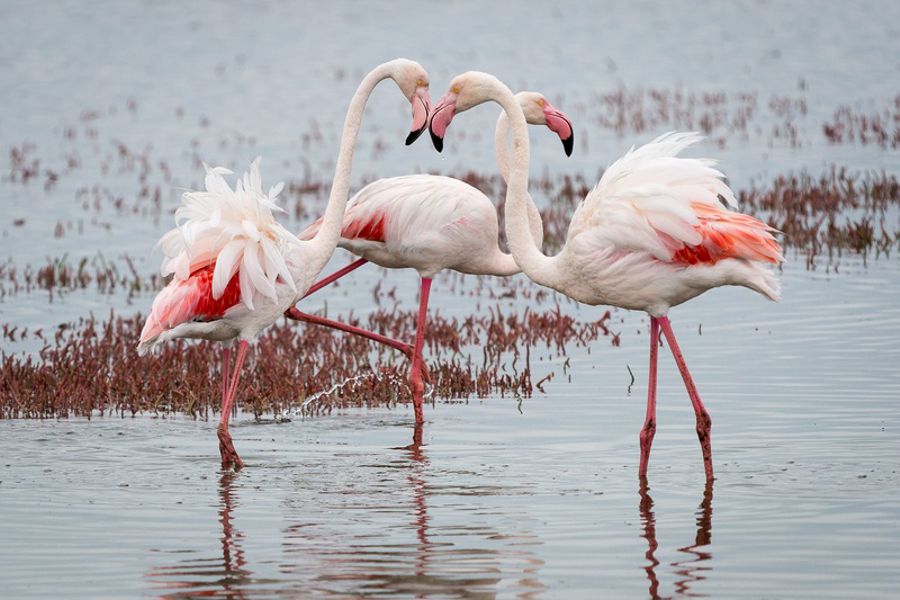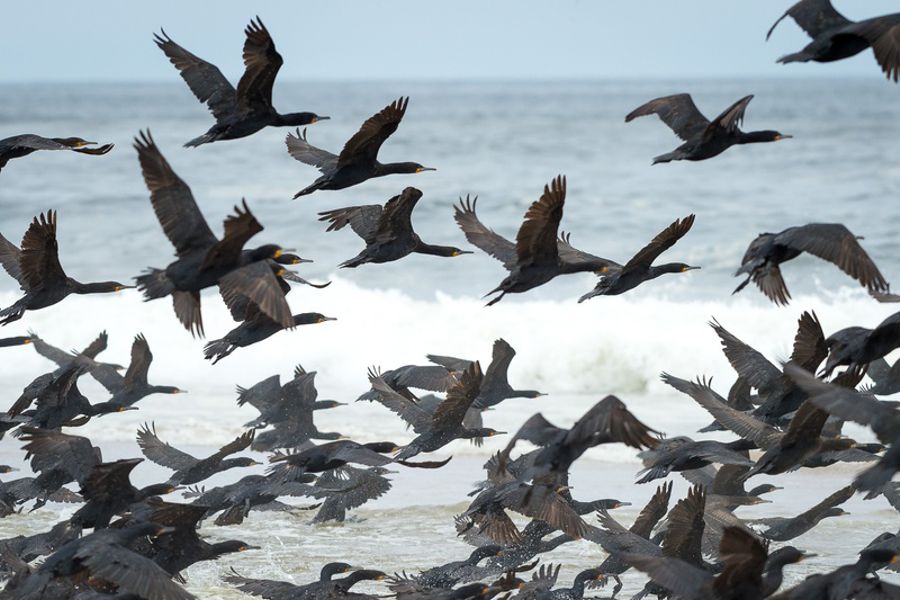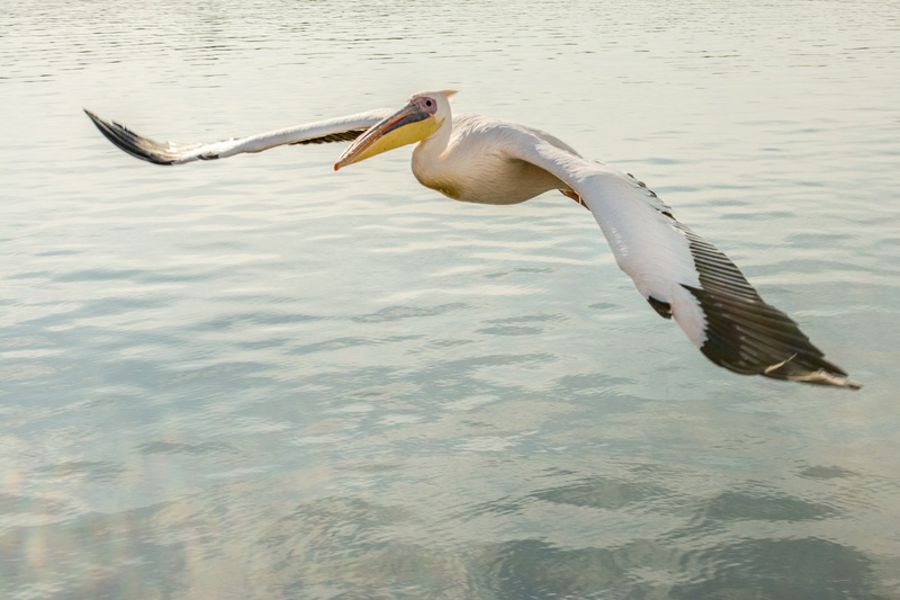Reisen in Afrika mit TiA einfach planen und sicher buchen
Pelagic Birding Excursion
A pelagic birding excursion aboard our smaller powered double-hull boat to the continental shelf, between 20 and 25 nautical miles west of Walvis Bay, often rewards the visitor with an incredible density of pelagic birds. The abundance of pelagic birds reaches its climax during the winter months of May, June and July when southern breeding birds visit these nutrient-rich waters. Whether it is summer or winter, you will not be disappointed. Birds likely to be seen include several species of Albatrosses, Petrels, Skuas, Prions, Fulmars and Gulls.
We depart from our offices at the Walvis Bay Waterfront at 08h00 and head out of the bay offshore in a westerly direction. During the two-hour ride, while sipping hot coffee and tea, we pass Pelican Point with its landmark lighthouse and 60,000 resident seals, and may encounter Bottlenose, Heaviside and Dusky dolphins, Mola, Leatherback Turtle or even a Southern Right Whale or two… We spend about two hours at 20 to 25 nautical miles offshore, where even the casual birder is bound to see a sprinkling of Cape Cormorant, Cape Gannet, White-chinned Petrel and Sooty Shearwater, Shy and Black-browed Albatrosses, with regular appearances made by Sub-Antarctic Skua, Northern and Southern Giant Petrels, Yellow-nosed Albatross, Wilson's Storm Petrel and Broad-Billed Prion. Our pelagic birding expert will point out and explain sightings.
During our journey back to the waterfront, lunch consisting of oysters, a variety of savoury snacks and desserts, accompanied by sparkling wine, light drinks, cooldrinks and water are served. We arrive back at the Waterfront at 13h00.
Walvis Bay, Waterfront
We depart from our offices at the Walvis Bay waterfront at 08h00 on our powered catamaran and head out of the bay offshore in a westerly direction.
Pelican Point
During the two-hour ride, while sipping hot coffee and tea, we pass Pelican Point with its landmark lighthouse and 50,000 resident seals, and may encounter bottlenose, heaviside and dusky dolphins, mola, leatherback turtle or even a southern right whale or two. We spend about two hours 20 to 25 nautical miles offshore, where even the casual birder is bound to see a sprinkling of Cape Cormorant, Cape Gannet, White-chinned Petrel and Sooty Shearwater, Shy and Black-browed Albatrosses, with regular appearances made by Sub-Antarctic Skua, Northern and Southern Giant Petrels, Yellow-nosed Albatross, Wilson's Storm Petrel and Broad-Billed Prion. Our pelagic birding expert will point out and explain sightings.
Back to Catamaran Charters HQ
During our journey back to the waterfront, lunch consisting of oysters, a variety of savoury snacks and desserts, accompanied by sparkling wine, light drinks, cooldrinks and water are served. We arrive back at the waterfront at 13h00.
· Variety of sea birds including the Great White Pelican (Pelecanus onocrotalus), Kelp Gull (Larus dominicanus), Hartlaub’s Gull (Chroicocephalus hartlaubii) and Cape Cormorant (Phalacrocorax capensis).
· Pelican Point with its light tower and resident colony of 60,000 Cape Fur Seals (Arctocephalus pusillus).
· Possible sightings of three species of dolphins: the bottlenose dolphin (Tursiops truncates), the Heaviside’s dolphin (Cephalorhynchus heavisidii), and the dusky dolphin (Lagenorhynchus obscurus).
· From July to November the prospects for whale sightings increases significantly. These commonly include sightings of Southern Right (Eubalaena australis) and Humpback (Megaptera novaeangliae) whales.
· Seeing the highly unusual mola or sunfish (Mola mola) or leatherback turtles (Dermochelys coriacea).
· Sightings of various pelagic and near-pelagic sea birds that include Cape Cormorant (Phalacrocorax capensis), Cape Gannet (Morus capensis), White-chinned Petrel (Procellaria aequinoctialis), Sooty Shearwater (Ardenna grisea), Shy Albatross (Thalassarche cauta) and Black-browed Albatrosa (Thalassarche melanophris). Other regular sightings include Sub-Antarctic Skua (Stercorarius antarcticus), Northern and Southern Giant Petrels (Macronectes halli and Macronectes giganteus), Atlantic Yellow-nosed Albatross (Thalassarche chlororhynchos), Wilson's Storm Petrel (Oceanites oceanicus) and Broad-Billed Prion (Pachyptila vittata).
Duration: 4.5 hours
Start Location: Walvis Bay, Waterfront
Departure Times: 08h30
Dropoff Time: 13h00
Dress: Flat shoes and Comfortable clothes. It can be a bit cold in the morning before the sun comes out, please bring something warm.
Fitness Level: Please advise in advance if you need any physical assistance. We do cater for persons with disabilities.
Pack: Bring sunblock, binoculars and a hat.
Du brauchst Hilfe beim buchen? Sprich mit uns!
+264-61-375 650

